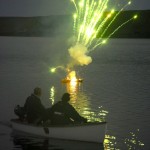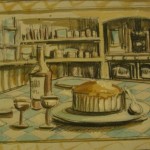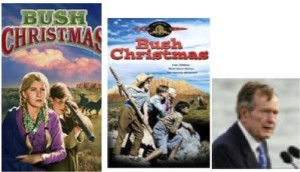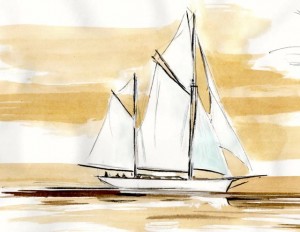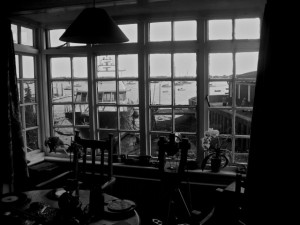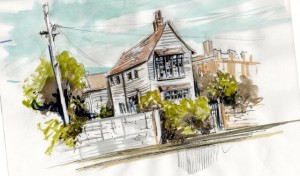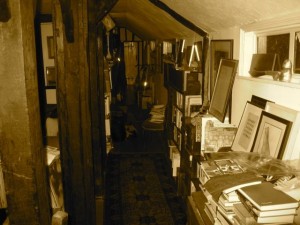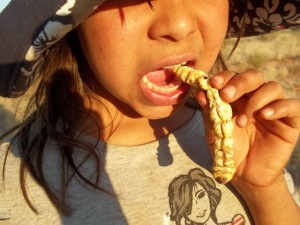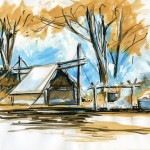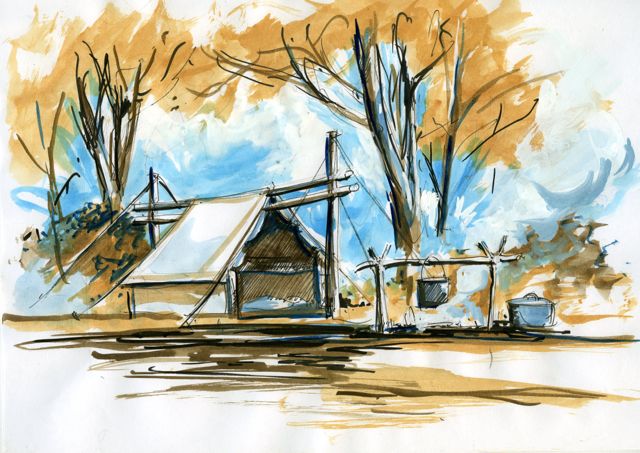Everyone tells me Chapel Hill NC is not like the rest of America. They’re quite insistent upon that, I shrug my shoulders and gesture, “well I hear what you’re saying”, but I’m still profoundly impressed. Perhaps it was crystallized for me when we dropped two year old Jeremy off at the Creche. He rushed up to one of his carers, a middle aged bloke called Larry, grabbed him around the leg, held him tight, both arms bear hugging his thigh, face turned adoringly upwards. My mind did a quick register, “man in a childcare facility?”… You’ve gotta be joking. But Chapel Hill is like that, a daily exploration of daily contradictions and as I’ve been here now for almost three days I’m worried that this assault upon my deep inlay of irreconcilable prejudice, the fundamentalist within, is leaving me stripped bare. If it goes on like this, I shall, like a character from a Stephen Spender novel, cease to exist in anything approximating my cynical former self.
My arrival at the airport triggered this fear, this crisis of identity. I was, (after some preliminary misunderstandings) astounded that the fee for parking was a paltry one dollar. Couldn’t believe it!!! Tullamarine, Melbourne’s International Airport and “Gateway” seems complicit in making air travel, and arrival the worst of experiences, and parking is a gouging $14 for the first hour. During the following day I became aware of other imponderables. Free local bus travel, and outrageously extensive public bicycle and walking path system, free swimming pools, and suburban sub divisions (with a delightfully observed absence of ersatz public art), in which so much more than the most meagre and useless adjuncts to drainage are converted to public open space. At the cafe I’m sitting in the wi-fi is free, and car drivers are courteous to a fault.
All this astounded me. I thought that this was meant to be the land of the selfish capitalist, the land where private is all, public is to be abhorred. Yet the absence of speed cameras, booze busses, police cars, boundary fences surrounding every house, the absence of rubbish, cigarette packets, beer cans, and McDonalds wrappers as decoration of the roadside, (all this in the land of McDonalds), and roads as cycle routes clearly marked, clearly patronised by hundreds of cyclists in which the motorist and cyclist alike understands the responsibility of sharing, courtesy, and respect speaks of a responsible, responsive and respectful society.
The further I went the more the contradictions rain down upon me, I am losing my sense of definition, black is not necessarily black and white has gone fuzzy and in between, beyond this, the general “friendliness” of the locals is deeply unsettling. To compound the issue, though I know there is a race divide, was my experience at the local cafe in which Latin American, African Americans and European Americans of all ages sat together savouring ice cream. I was bewildered by the absence of the racial divide that I feel in Alice Springs, (although I haven’t seen a Native American yet).
In a day or two I’m off to see another America, possibly more correctly identified as a “real America”, but for this moment, I must content myself with an impression that this part of North Carolina shares more with (my imagined) nordic socialism of Sweden than the aggressive, singleminded selfish capitalism I’ve accepted as the norm. Chapel Hill counters the preconceived stereotypical Australian view I had of this country.
Quentin Cockburn

